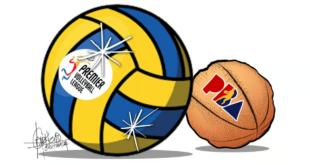It is a narrative that perfectly personifies the resilience and determination of Filipinos and their ability to turn a setback into a winning moment.

Filipinos shed tears of joy seeing Gilas Pilipinas lift the Asian Games trophy for the first time in 61 years.
It was such a surreal moment.
At a time when various problems are hounding the country, hearing the national anthem being played in the international arena brought so much joy to the hearts of basketball-crazy Filipinos.
Gilas coach Tim Cone had to rub his eyes a hundred times to ensure this historic run that has united the nation wasn’t a fantasy.
But penning the perfect ending to this fairy tale campaign wasn’t easy. It took a lot of hard work, determination, and prayers for Gilas to get where they wanted to be.
After Gilas Pilipinas came up with a forgettable performance in the FIBA Basketball World Cup, most of its players left for abroad to continue their respective professional careers.
Then Gilas coach Chot Reyes resigned, leaving the team practically without the core that trained for two months in Europe in preparation for the World Cup.
With more than half of the team, including its head coach, gone, the Samahang Basketbol ng Pilipinas reached out to the Philippine Basketball Association and San Miguel Corporation for help in forming a team that would see action in the 19th Asian Games.
The PBA and SMC didn’t hesitate.
SMC sports director Alfrancis Chua, the team manager, tapped Cone to serve as a mentor and instructed him to assemble a squad capable of bringing back Asian glory to the country.
Cone gathered the best players available, including those not part of the original 60-man pool the SBP initially submitted to the organizers, like Calvin Abueva, Mo Tautuaa, Terrence Romeo and Jason Perkins.
The team started training, but just before it left for China, the SBP was informed that Abueva, Tautuaa, Romeo, and Perkins couldn’t play because they were not on the long list submitted to the organizers. Then Roger Pogoy crashed with an injury, prompting Chua to look for five players who could report for training as soon as possible.
He checked the initial roster and saw the names of Kevin Alas, Chris Ross, CJ Perez and Arvin Tolentino. He also tapped Marcio Lassiter to serve as Pogoy’s replacement.
With time running out, Alas, Ross, Perez, Tolentino, and Lassiter joined the training and packed their bags for Hangzhou without any assurance that they would be given the green light to see action.
They were already at the departure area of the Ninoy Aquino International Airport, but they had yet to receive their accreditation cards, which would also serve as their visas for entering China.
The airline was already preparing to off-load their baggage when Chua got a call that the Philippine Olympic Committee had finally settled the matter, and the late additions could now board the flight. Whew!
In Hangzhou, things were not going smoothly as well.
Some of the team’s key personnel, like assistant manager Willie Marcial and assistant coach LA Tenorio were not given their accreditation cards on time. Even the physical therapist was not accredited immediately, prompting the Filipinos to play their first game against Bahrain without able medical personnel.
The organizers also mixed up the names of the Gilas players, making it very confusing during the games.
Still, the rag-tag Gilas Pilipinas soldiered on. They didn’t let the setbacks and difficulties distract them from their goal of winning the title.
That’s why they played as if their lives were on the line when they were matched up with China in the semifinal round. They fell behind by as many as 20 points before rallying in the fourth quarter to get within striking distance, 71-76.
Then naturalized player Justin Brownlee took over and scored back-to-back three-pointers in the final stretch to steal the lead, 77-76, and seal the victory that sent the Filipinos back to the Asian Games finals for the first time since 1990 in Beijing.
In the finals, Brownlee was again at his best as he outdueled his rival, Rondae Hollis-Jefferson, at both ends to lead the Filipinos to their first Asian Games title in 61 years.
The story of Gilas is not just about basketball. It is a narrative that perfectly personifies Filipinos’ resilience, determination, and ability to turn a setback into a winning moment.
If these Gilas boys hadn’t displayed courage and mental toughness when great odds were stacked against them, there would be no gold medal to celebrate, no history to be made, and the Filipinos would still be stranded in the dark basement of Asian basketball.
We should draw inspiration from these brave Filipino basketball players — not only for winning the Asian Games gold medal — but for proving that they can stand up after every fall and rise amid countless adversities.
*****
Credit belongs to: tribune.net.ph
 Atin Ito First Filipino Community Newspaper in Ontario
Atin Ito First Filipino Community Newspaper in Ontario






